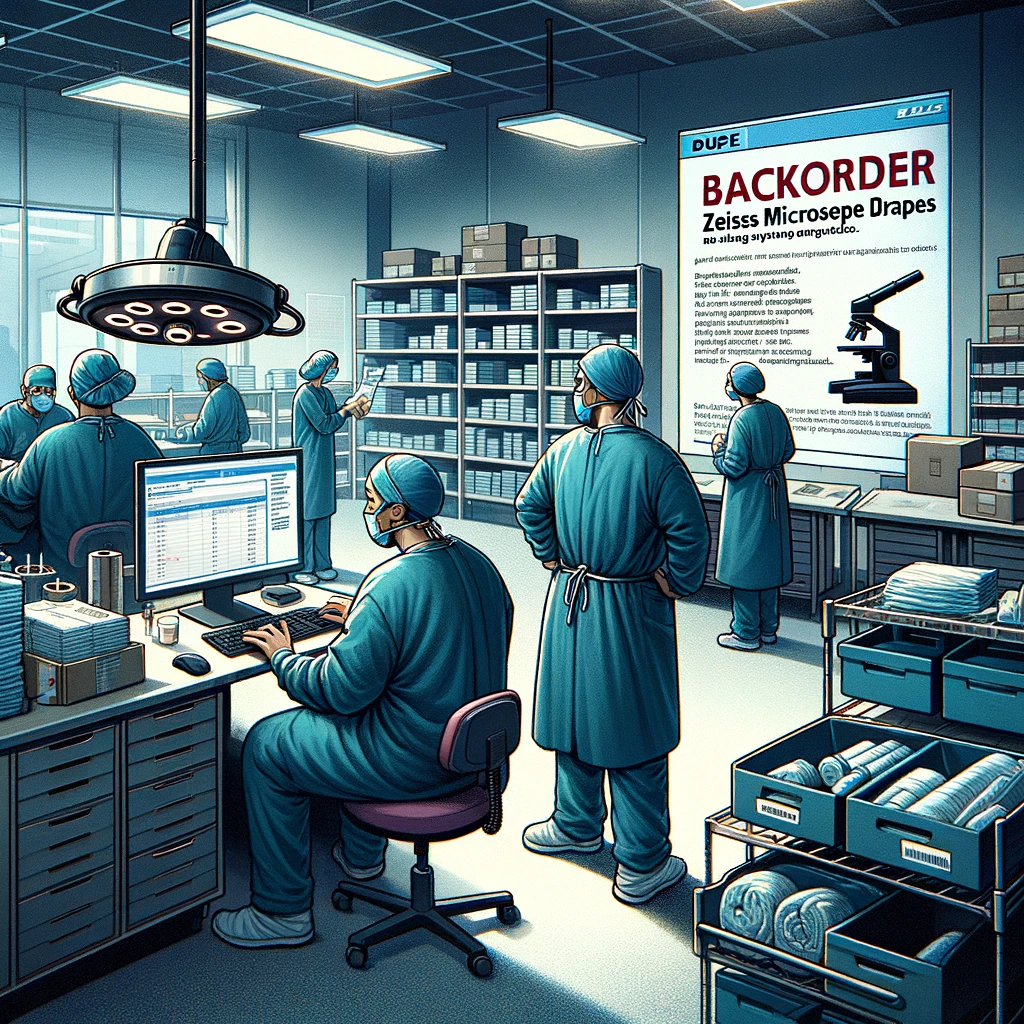 Introduction
Introduction
In the world of healthcare, surgical procedures represent the pinnacle of medical expertise, demanding precision, skill, and the right tools at the right time. However, the smooth functioning of these high-stakes operations is often at the mercy of an overlooked yet crucial aspect: the supply chain. This article delves into the profound impact of back orders on surgical procedures, with a particular focus on Zeiss Microscope Drapes, a critical but often understated component in the operating room.
The Importance of Zeiss Microscope Drapes
Zeiss Microscope Drapes play a vital role in maintaining sterility and functionality within the surgical environment. These specialized drapes are designed to cover surgical microscopes, protecting them from contamination while allowing surgeons to operate with precision. The absence of these drapes not only compromises sterility but can also lead to delays or cancellations of surgeries, affecting patient outcomes.
The Ripple Effect of Back Orders
When back orders occur, the ripple effect is profound. Hospitals and surgical centers rely on a steady supply of these drapes to maintain their schedule of operations. A back order disrupts this flow, leading to a series of complications:
- Surgical Delays and Cancellations: The immediate impact is the postponement or cancellation of surgeries. This not only impacts patient health but also adds to the backlog of surgical cases.
- Increased Costs: Delays in surgeries can lead to longer hospital stays for patients, increasing healthcare costs significantly.
- Stress on Healthcare Professionals: Surgeons and operating room staff face increased pressure and stress, having to rearrange schedules and manage patient expectations.
The Underlying Causes
The reasons for back orders are manifold, ranging from manufacturing delays, logistical challenges, to sudden spikes in demand. In the case of Zeiss Microscope Drapes, specific issues include limited number of suppliers and challenges in the manufacturing process.
Mitigation Strategies
To combat these challenges, hospitals are adopting various strategies:
- Diversifying Suppliers: By not relying on a single source for supplies, hospitals can mitigate the risk of back orders.
- Advanced Inventory Management: Implementing sophisticated inventory systems can help predict and manage stock levels more effectively.
- Collaboration with Suppliers: Building strong relationships with suppliers ensures better communication and reliability in supply chains.
Conclusion
The impact of back orders, especially in critical supplies like Zeiss Microscope Drapes, is a stark reminder of the interconnected nature of healthcare. It underscores the need for robust supply chain management to ensure that surgical procedures are not just about the skills of the surgeons, but also about the availability of the right tools at the right time. Addressing this issue is not just a matter of logistical efficiency; it’s about patient care, cost management, and the overall efficacy of healthcare systems.
To learn how DB Surgical can help your facility with backorders, contact us here: Contact Us Today | Advanced Surgical Products | DB Surgical

